|
Atterbury-Bakalar Air Museum
Ernie Pyle WWII Museum
Five Points Fire Museum
Fort Wayne
Firefighters Museum Freeman
Army Airfield Museum
Virgil "Gus"
Grissom Memorial
Hoosier Air Museum
Indiana Military
Museum
Indianapolis Fire Museum McClain
Military Museum
Military Honor
Park and Museum
Museum of the Soldier
National
Military History Center/Automotive and Carriage Museum National
Model Aviation Museum
Rolls-Royce Heritage Center, Allison Branch
Ropkey Armor Museum
Stutz Car Museum
Wayne County
Historical Museum
Indiana Museums
- Aviation, Military, Automotive and Fire
Five
Points Fire Museum (Old Fire Station No. 3)
Lafayette, IN
Date Visited: 11-5-2014
I have driven by the fire
station that is now the Five Points Fire Museum in Lafayette, IN many
times over the years on my way to visit the area and Purdue University.
As I passed by the the fire house the road would take me downhill and
into downtown Lafayette, which I would pass through before crossing over
the Wabash River to arrive in West Lafayette and Purdue University.
The fire station to me was always like a lighthouse in a harbor,
signaling I was almost to my final destination, after an hour and half
drive.
I was therefore pleasantly
surprised when I became aware that the old fire station I drove by so
many times had been converted into the Five Points Fire Museum. A
quick call indicated that while the Museum's normal open hours are on
Saturday afternoon from 1-4, there would be someone there on the
Wednesday I called, and I was free to stop by and visit.
One of the volunteers and
the historian at the museum, Van Sherry, spent over two hours touring me
through the building and explaining the equipment and the history of the
Lafayette Fire Department. Van, along with museum curator "Corky"
Balser are normally working at the museum during the week. For
someone that is interested in getting an informative, guided tour of the
Museum, I suggest they call at 765-429-1046 to set up an appointment or
verify Saturday hours.
Once again, I have found
another small, but excellent museum, in Indiana that I was not aware of,
that pleasantly surprised me with excellent and interesting technology
displays and a great personalized tour.
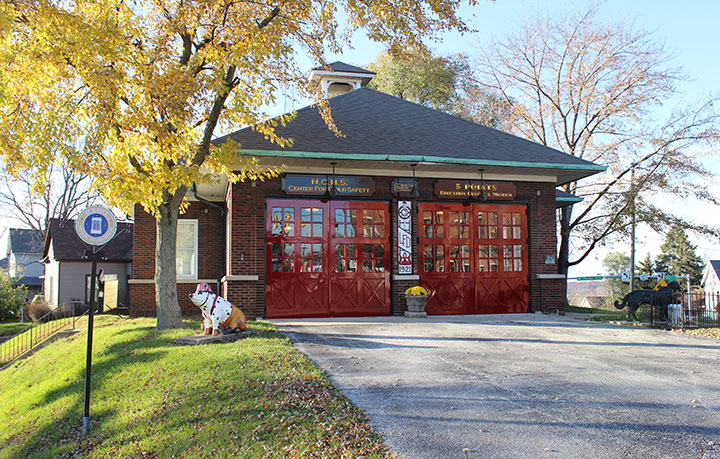
The Five Points Fire Museum looking west. Many a time I saw this
particular view as I was on my way to Purdue to the west. The name
Five Points comes from the number of streets that intersect behind where
I was standing to take this photo. Originally built in 1921 at a
cost of $20,000, Fire Station No 3. operated until 2002 when a new No. 3
Station opened up two blocks away. In 2001 this building was
placed on the National Register of Historic Places.
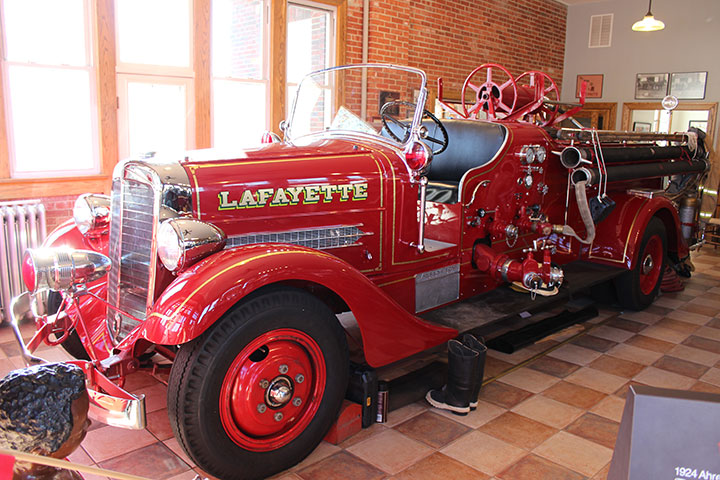
There are two Ahrens-Fox fire engines in the museum and this one was
built in 1936 and served with the Lafayette Fire Department from January
1937 until July 1969. So this piece of fire equipment that started
its service life before World War Two was still in service at the time
of man's first walk on the moon. From 1947 to 1953 it operated
right where right where it is on display now. This museum owned
apparatus is operational and does go out for special occasions.
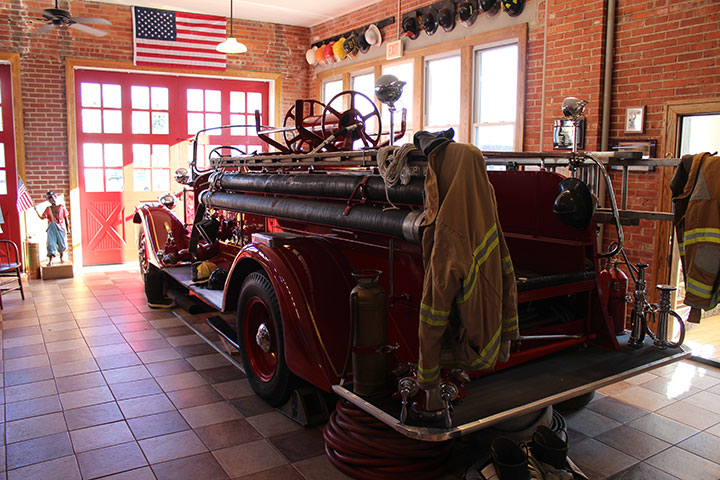
Ahrens started building steam pumpers before moving to internal
combustion engines. The company, located in Cincinnati, OH became
Ahrens-Fox when Mr. Fox married Mr. Ahrens's daughter. The company
stayed in business until the 1950s.
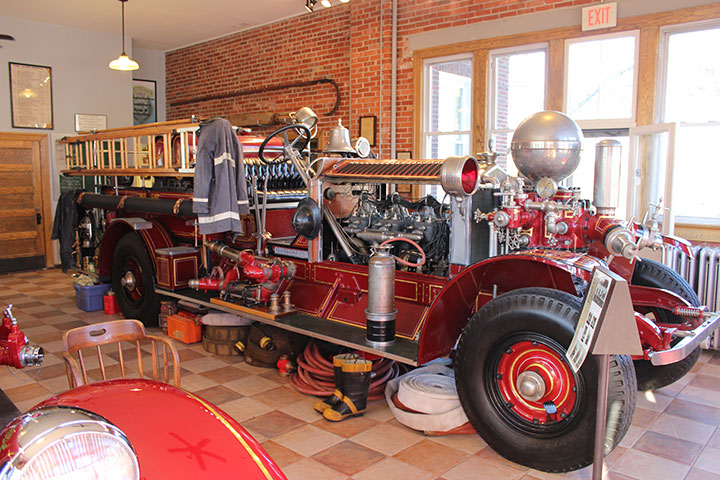
This 1924 Ahrens-Fox J-S-4 Pumper, on loan from a private collector, is
on display to represent a similar 1921 unit that served with the
Lafayette Fire Department.
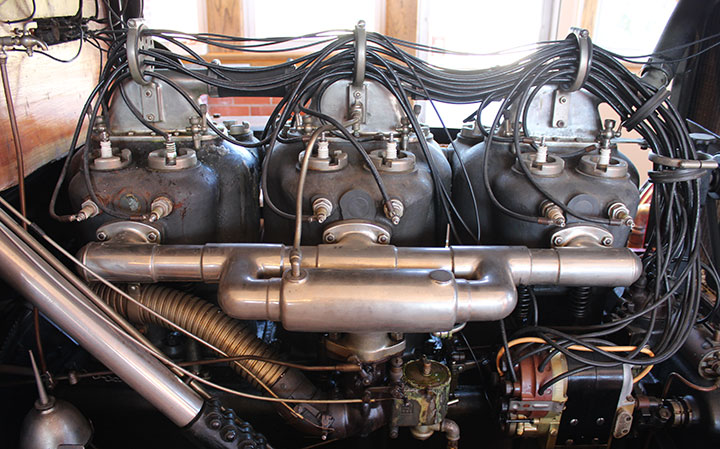
The six cylinder, 691 cu. in., 90 hp engine was of most interest to me.
Note that each cylinder has two sparkplugs that are connected to the
magneto in the lower right. Cylinder heads can be removed and
replaced if necessary.
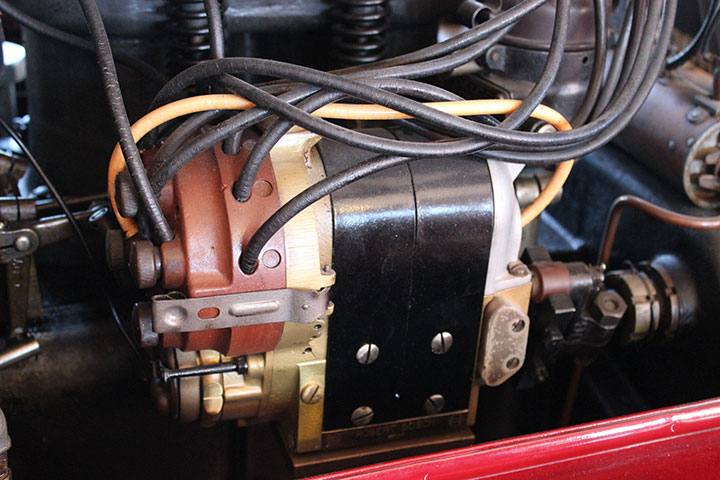
The Bosch magneto has been rebuilt and looks brand new.

This engine also has a battery and distributor ignition system on it.
One can also see the exposed pushrods and valve springs, along with the
individual cylinders that can be replaced if needed.
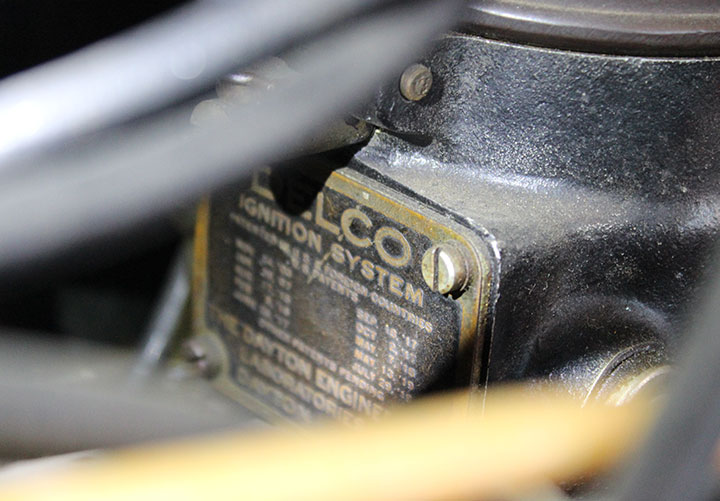
The ID tag on the Delco distributor or Dayton Engineering Laboratories
Company. DELCO as a manufacturer of ignition systems ceased to
exist in name when it was folded into the Delco-Remy Division of GM in
Anderson, IN. in 1926, and all the tooling was moved to Anderson
from Dayton. What was left in Dayton was shock absorber production
and in 1929 the new Delco Products Division of GM was created to
manufacture them.
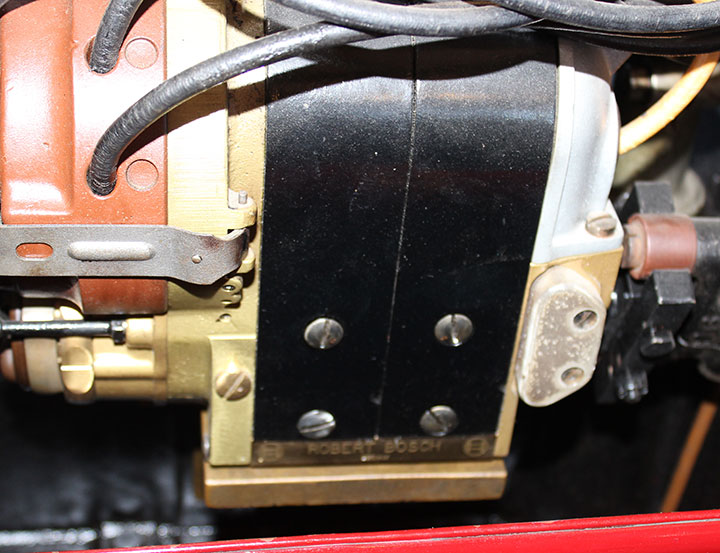
This view shows the Robert Bosch name on the magneto.
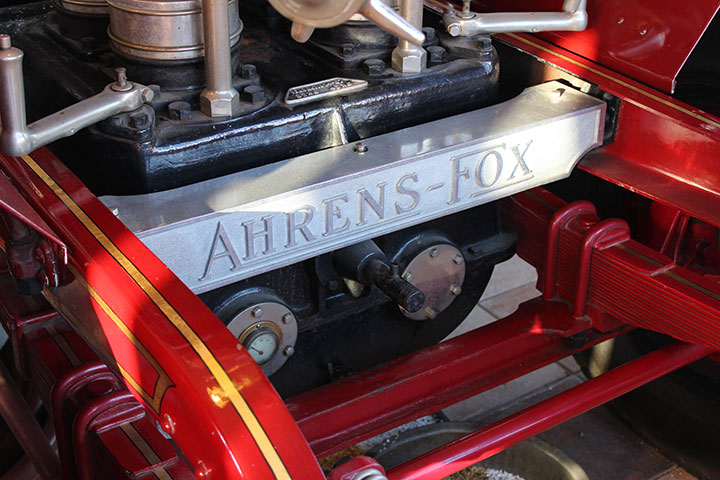
This where one would put the crank on to manually start the engine.
This is not for the faint hearted.
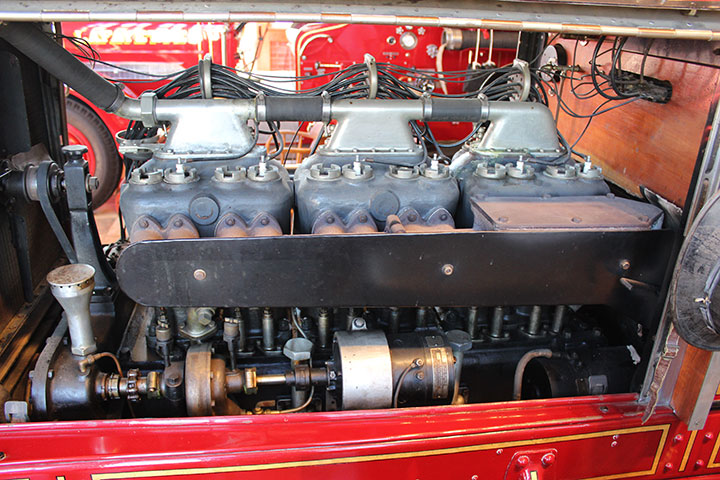
Looking at he other side of the engine one can see the six sparkplugs
that are attached to the distributor. There is six more plugged
holes that could be used for a second distributor, if specified by the
customer. My thoughts are that it would be located in the front of
the engine were the device that looks like a crankcase breather is
located. One can also see the exposed valve lifters along with the
water pump and DC generator.
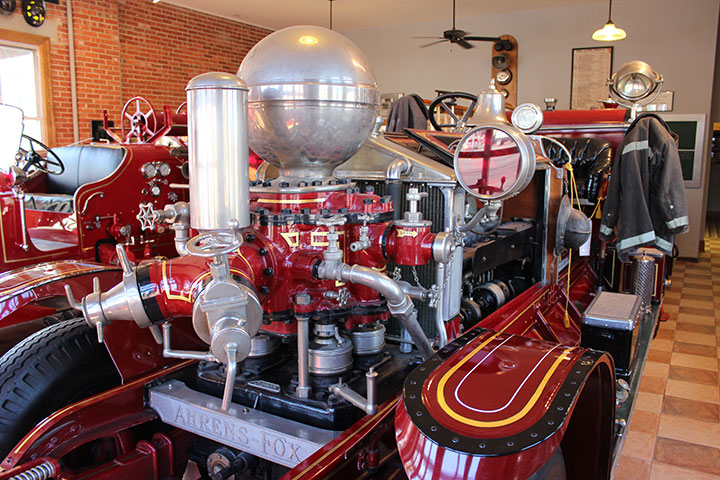
In 1924 Ahrens-Fox was still building pumper forward models such as this
and the pump was actually the same technology used on its previous steam
pumpers. However, due to the fact that steam pumpers idle at 100
RPMs and internal combustion engines idle at least five times faster,
the output from power take-off from the engine has to be geared down.
The large bell is called a compression chamber and its function is to
smooth the output from the pump.
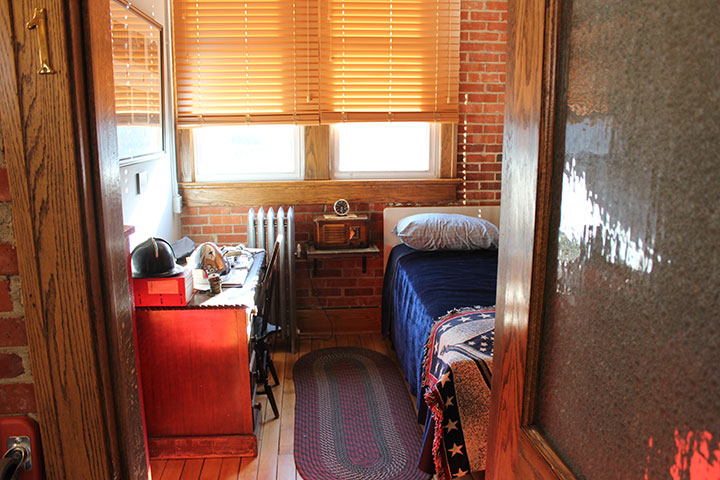
Although the Old Station No. 3 was set up for two engine companies, only
one was ever stationed here. There were four individual bedrooms
so each fire person had their own room. This one has been left as
an example of the living quarters in the station.
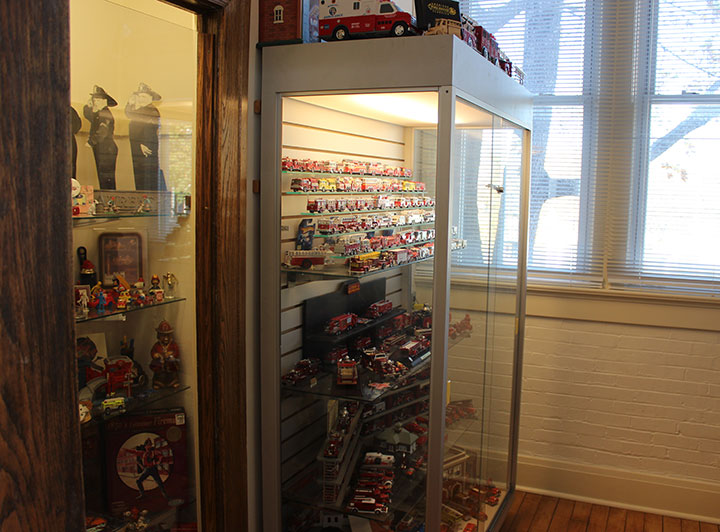
This former bedroom is now the toy room. Every self respecting
fire museum has a display of fire engine toys and models.
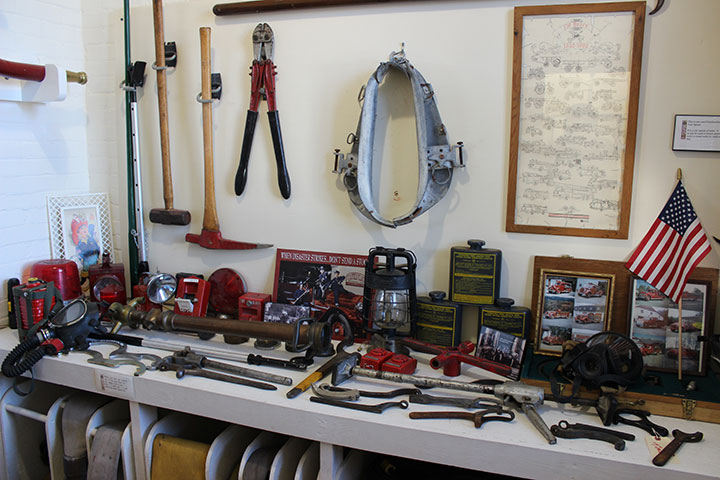
Another room had an equipment display.
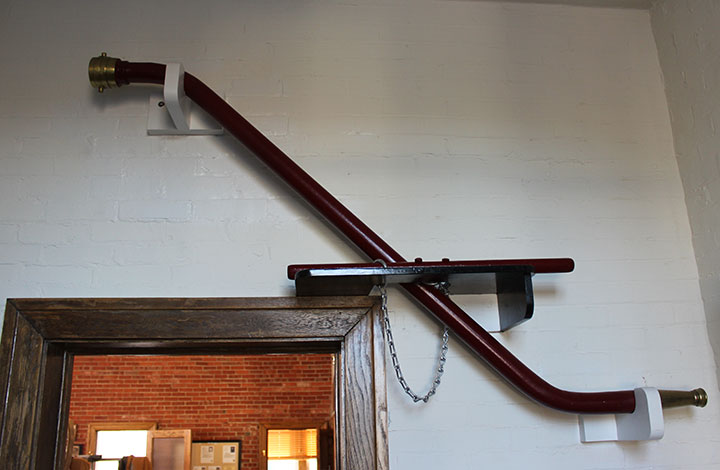
This nozzle on the wall is for fighting a fire in a basement.
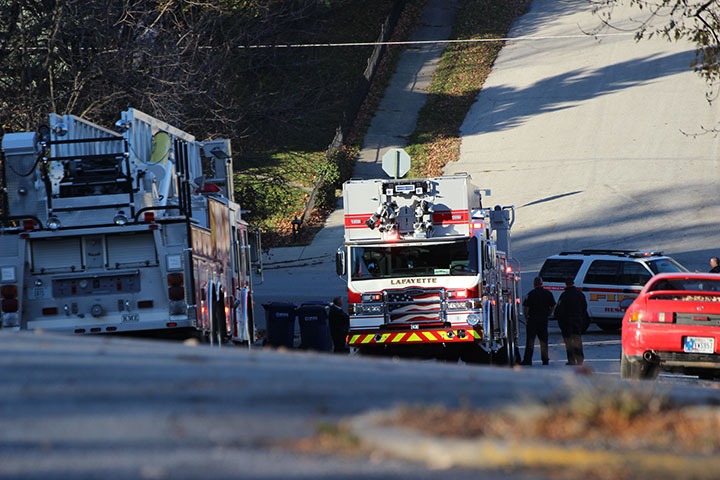
The old and the new. Some of the most aggressive hills in the City
of Lafayette are just down the street from the Museum. Here a new
Lafayette Fire Department ladder truck is being tested on the steep
slope. Just before I took the photo the ladder had been extended
over a house to the right. The stability of the unit was being
tested before being put into service. The old ladder truck is on
the left.
|
















